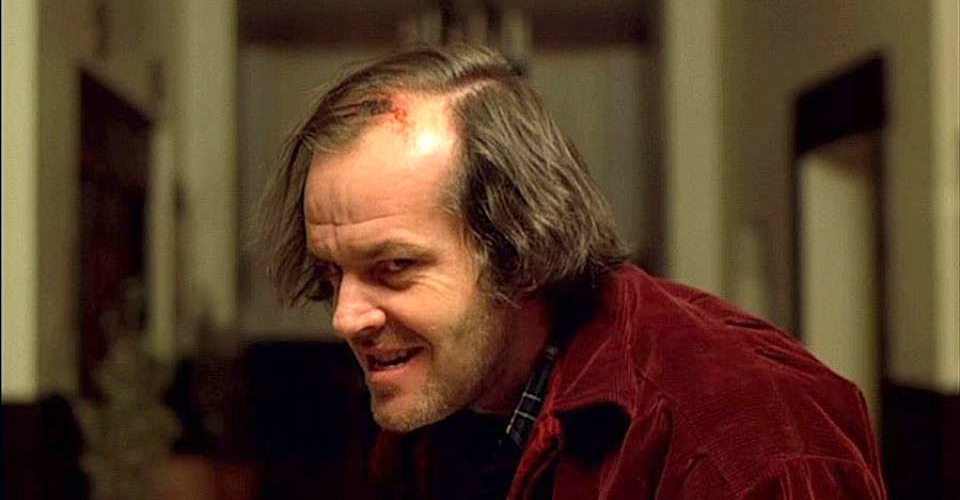
Stanley Kubrick’s adaptation of Stephen King’s novel “The Shining” was released in theaters in spring 1980. The film opened to mixed reviews; Janet Maslin, film critic for the New York Times, gave the following critique of the horror film: “The supernatural story knows frustratingly little rhyme or reason. Even the film’s most startling horrific images seem overbearing and perhaps even irrelevant.”
While many film critics weren’t blown away with the film during its initial release, the film would go on to be considered as one of the greatest horror films ever made. The scares in the film weren’t delivered by gore or or grisly special effects; it was masterful direction orchestrated by Kubrick and a tour de force performance by Jack Nicholson that created a suffocating sense of dread and doom throughout the film, building a psychological horror that traps the viewer inside the Overlook Hotel with the tragic characters in the film, making “The Shining” an unforgettable masterpiece of horror cinema and the best horror movie of all time.
1. Stephen King’s book vs. Stanley Kubrick’s adaptation
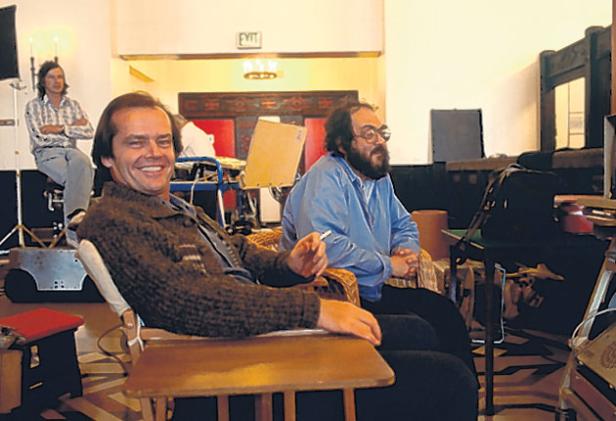
From the time the film was released up to this very day, the biggest critic of Kubrick’s “The Shining” was none other than Stephen King. King described Kubrick’s version as cold and unfaithful to his novel, but to be fair, Kubrick’s version is less of an adaptation of King’s novel and more a frightful hallucination of the book. While King hated the movie version of the book, the author had to concede to the brilliance of the film in an interview he did for TV Guide: “Could it have been done better? Over the years I’ve come to believe that it probably could not. The film is cold and disappointingly loveless—but chilling.”
It’s easy to see why King was so guarded about his novel, because “The Shining” is a masterpiece of literature and probably one of the best horror novels ever written. King proved with his third novel that he was more than just a talented wordsmith, that he’s one of the greatest writers of his time.
King’s ability to weave together a compelling story made “The Shining” a page turner, and while there a select few movies that are able to ellipse the novels upon which they’re based, most notably “The Godfather,” no matter how brilliant Kubrick’s adaptation of “The Shining” is, it doesn’t surpass the brilliance of King’s book.
Both versions, the book and the movie, have distinctive scenes in them which make each one a standalone classic. In the book, King gives the Overlook Hotel a more detailed backstory; Jack Torrance finds an old scrapbook, ledger, and old newspaper clippings while doing routine maintenance on the boiler inside the Overlook Hotel.
The information Jack finds tells a sordid tale of the Hotel’s past that includes stories of gangsters staying at the Overlook and brutal murders taking place at the hotel. King manages to give the hotel a history, which explains how the unseen evil had managed to lurk inside the hotel for all those decades.
Also, chapter 36, titled The Elevator, is a chilling read inside the book which would have been interesting if Kubrick had included it in the movie version. At this point in the book, the supernatural forces inside the Overlook Hotel have slowly terrorized the family and Jack is beginning to lose his sanity.
One night while the family is sleeping, the elevator inside the hotel comes to life, traveling up from the lobby. The loud noise awakens the family and naturally, Wendy and Danny are terrified, believing someone or something is riding inside the elevator. Jack, however, is dismissive, believing the elevator is malfunctioning due to a short circuit.
When the entire family goes to investigate, Wendy and Danny can hear voices, and it appears a party is coming to an end inside the hotel and people are saying their good-byes. Jack is the only one who can’t hear the phantom voices.
When the elevator comes to a stop, Jack feels vindicated when they find no one inside, but Wendy reaches into the elevator pulling out New Year’s Eve confetti, hats, a silk black cat’s-eye mask and a disturbing thing King describes as: “A green party streamer, FADED to a pale pastel color with AGE.” The ghostly inhabitants of the Overlook Hotel leaving behind evidence of their party from the past was a chilling moment in the book, and sadly Kubrick didn’t include it in the movie version.
The ending in the movie version is more climactic and better than the book’s ending. In the book (spoiler alert), the Overlook Hotel is destroyed by a faulty boiler when it blows up. However, Kubrick’s version, when Jack is chasing his young son through the maze, is one of the most memorable scenes in movie history. By having Danny outwitting his possessed father by covering up his tracks in the snow and backtracking in his footsteps before hiding in the snow, Kubrick shows that the imagination and courage of a young child could even outsmart the dead spirits inhabiting the Overlook Hotel.
2. Jack Nicholson
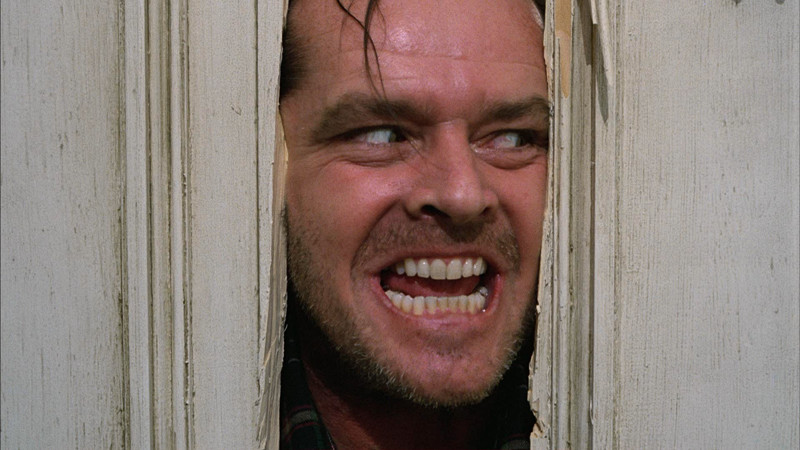
In his heyday, Jack Nicholson was considered one of the best actors in the business, and considering the competition at the time when there were other great actors like De Niro, Pacino, Hoffman, and Redford making great films, it says a lot about Nicholson’s talent as an actor. Because not only was he a movie star during the prime of his career, he was also an icon.
Nicholson won two Oscars for Best Actor for the films “One Flew Over the Cuckoo’s Nest,” released in 1975, and “As Good as it Gets,” released in 1997, but it’s reasonable to state that his performance in “The Shining” was his best performance captured on film and this role solidified him as one of the greatest actors of all time. His performance is chilling as we watch Jack portray a man slowly losing his mind and morphing into a homicidal maniac; the acting is so convincing that Nicholson becomes one of the scariest monsters in movie history.
Jack also improvised many of the scenes in the film; the most notable is when Wendy, played by Shelley Duvall, confronts him while he’s typing on his typewriter, and he slowly explodes with anger at her. Kubrick was impressed with Nicholson’s talent and had this to say: “His work is always interesting, clearly conceived, and has the X-factor, magic. Jack is particularly suited for roles which require intelligence. He is an intelligent and literate man, and these are almost impossible to act. In ‘The Shining’ you believe he’s a writer, failed or otherwise.”
3. The Overlook Hotel
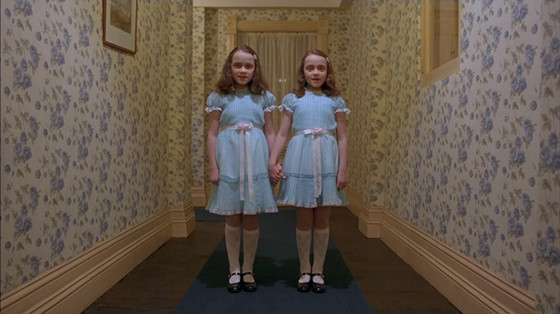
While in the book version of “The Shining” the Overlook Hotel had an interesting backstory of bad things occurring there over the years, in the movie, the Overlook is more like a mysterious figure quietly stalking the characters on screen, waiting for the right moment to strike.
Hiding inside the hotel are the Grady Twins, the two infamous inhabitants who haunt the hallway of the hotel telling Danny they’ll be here forever and ever and ever. Ironically, it was a trip to a hotel that gave King the inspiration for story of “The Shining.”
In 1974, King and his wife checked into the Stanley Hotel in Colorado. The hotel was closing for the season and King and his wife were the only two guests at the hotel. After dinner, King’s wife decided to turn in for the night but King decided to tour the empty hotel and ended up at the bar where he met the bartender named Grady. When King finally went to sleep, he woke later that morning from a nightmare. The author jumped out of bed to smoke a cigarette and when he finished smoking, he pretty much had the outline for the novel “The Shining” completed in his head.
4. Redrum
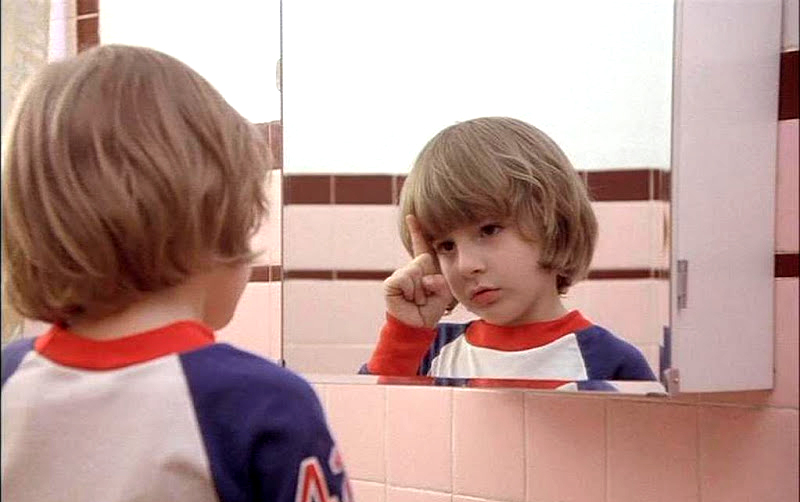
Young Danny keeps repeating this word trying to warn his mother about the impending danger. It’s only later in the film when Wendy sees the reflection of the word written on a wall that she realizes redrum is murder spelled backwards. The brilliant thing about “The Shining” is that it’s a movie where the horror comes from the most taboo subject, and that’s harming one’s own family member.
Stephen King talks about the thought process and how he came up with the concept for “The Shining” and had this to say: “Sometimes you confess. You always hide what you’re confessing to. That’s one of the reasons why you make up the story. When I wrote ‘The Shining,’ for instance, the protagonist of ‘The Shining’ is a man who has broken his son’s arm, who has a history of child beating, who is beaten himself. And as a young father with two children, I was horrified by my occasional feelings of real antagonism toward my children. Won’t you ever stop? Won’t you ever go to bed? And time has given me the idea that probably there are a lot of young fathers and young mothers both who feel very angry, who have angry feelings toward their children. But as somebody who has been raised with the idea that father knows best and Ward Cleaver on ‘Leave It To Beaver,’ and all this stuff, I would think to myself, Oh, if he doesn’t shut up, if he doesn’t shut up. So when I wrote this book I wrote a lot of that down and tried to get it out of my system, but it was also a confession. Yes, there are times when I felt very angry toward my children and have even felt as though I could hurt them. Well, my kids are older now. Naomi is fifteen and Joey is thirteen and Owen is eight, and they’re all super kids, and I don’t think I’ve laid a hand on one of my kids in probably seven years, but there was a time.”
This is one reason “The Shining” is so chilling as a parent; you might fear one day you might lose control and snap, harming your children, or as children we all had fears growing up that our parents might go insane and harm us. The fear that the people who are the closest to you can harm you is why “The Shining” attacks the viewer at a psychological level.
5. Forever and ever and ever
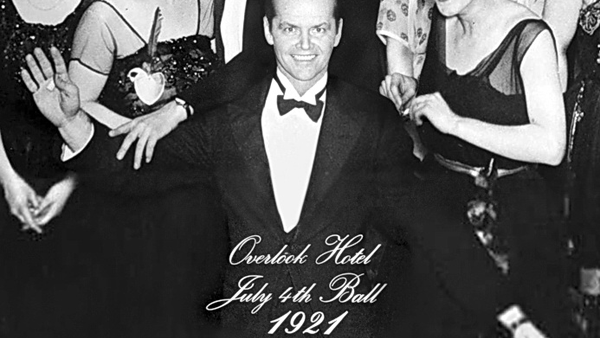
“The Shining” seems to be about a hellish purgatory located on earth where sinners return to committed their sins all over again. When Jack finally meets Grady while at a ghostly ballroom party taking place at the hotel, Grady is now a server and s a drink on Jack. When the two men head to the bathroom so Grady can clean up the mess he made on Jack’s clothing, Jack confronts the former caretaker about the murders he committed.
Grady is confused but delivers a revelation to Jack with the following dialogue: “I’m sorry to differ with you sir, but you are the caretaker. You’ve always been the caretaker. I should know sir, I’ve always been here.” When Danny encounters the Grady Twins apparitions, dressed in identical clothing holding hands in the hallway while he’s riding his big wheel, the Grady Twins tell Danny the following: “Hello Danny. Come and play with us. Come and play with us Danny, forever and ever and ever.”
Kubrick presented a premise that someone could relive their sins over and over trapped in some godforsaken hotel. At the end of the film, the camera does a slow track down the hallway until the camera arrives at a close-up of a framed photograph hanging on the wall showing a ballroom party from the 1920s, and in the crowd smiling is Jack Torrance.
Whatever sin he committed during that era, it seems he’s destined to return decades later to try to kill his family, but only ends up killing himself by freezing to death while lost in a maze. And that’s the brilliance of the movie “The Shining” – the Overlook Hotel is hell on earth and all the sinners who pass through the hotel doors must relive their sins forever and ever and ever.
Author Bio: R. Prince is a filmmaker from Harlem, New York and the author of the book How to Roll a Blunt for Dummies.